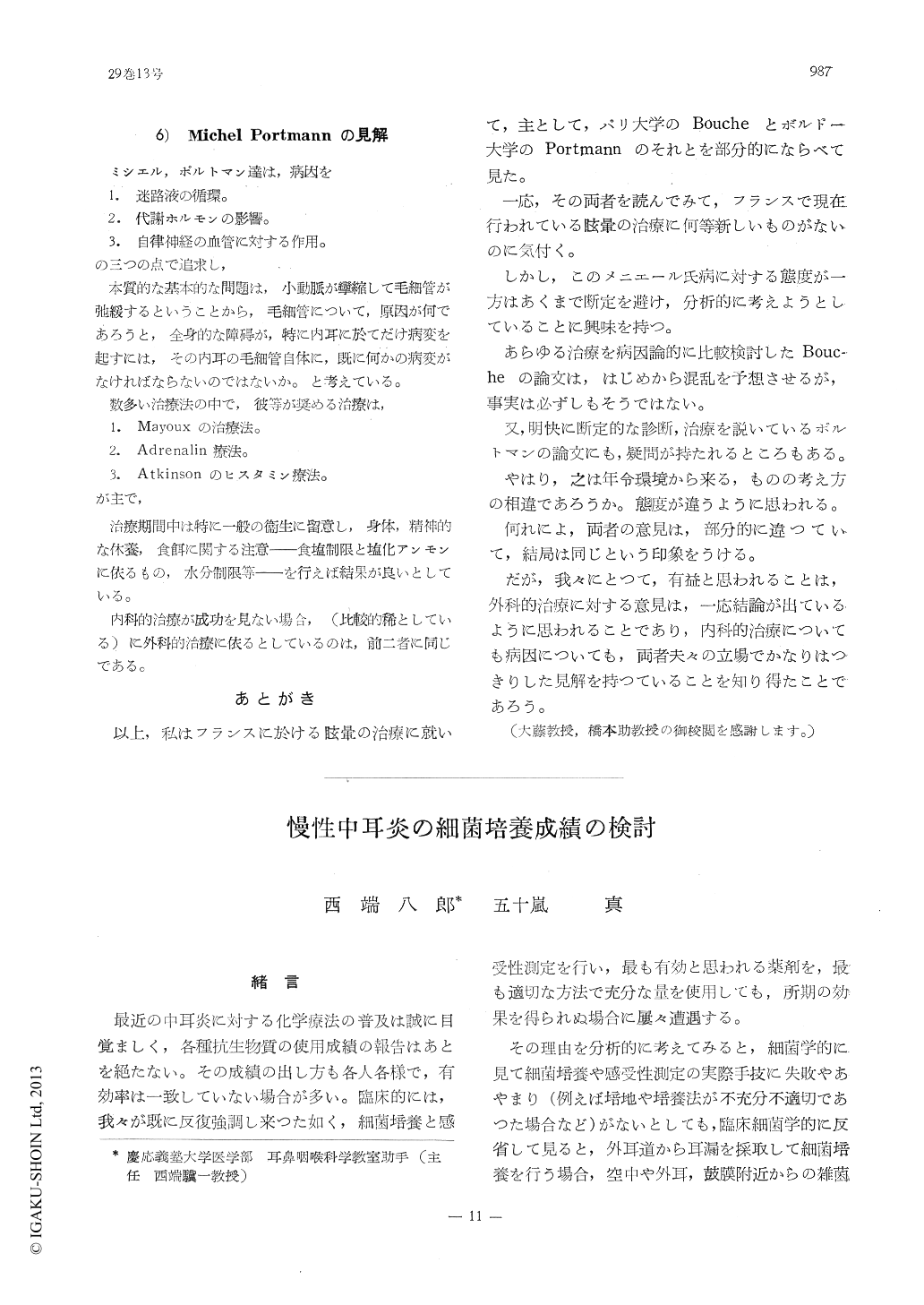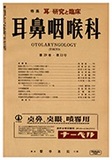- 有料閲覧
- 文献概要
- 1ページ目
緒言
最近の中耳炎に対する化学療法の普及は誠に目覚ましく,各種抗生物質の使用成績の報告はあとを絶たない。その成績の出し方も各人各様で,有効率は一致していない場合が多い。臨床的には,我々が既に反復強調し来つた如く,細菌培養と感受性測定を行い,最も有効と思われる薬剤を,最も適切な方法で充分な量を使用しても,所期の効果を得られぬ場合に屡々遭遇する。
その理由を分析的に考えてみると,細菌学的に見て細菌培養や感受性測定の実際手技に失敗やあやまり(例えば培地や培養法が不充分不適切であつた場合など)がないとしても,臨床細菌学的に反省して見ると,外耳道から耳漏を採取して細菌培養を行う場合,空中や外耳,鼓膜附近からの雑菌混入Contaminationを防ぐことは事実非常に困難である。従つて厳密には検出菌の病原性や毒力の検査迄行つて後に原因菌と確認すべきであるが,検査に相当な困難を伴うことが少くなく,又,時間も掛りすぎる。要するに経外耳道的に採取した検査物からは真の原因菌でないものを取り出して云々する可能性があることを忘れてはならない。これが妥当と思われる化学療法が奏効しない場合があることの一因となつているのではないかと考えられる。
H. Nishihata and Igarashi find that only 30% of cases of chronic otitis media that were treated by mastoidectomies showed an agree-ment of bacterial flora that were respectively cultured from materials derived from the external canal and the mastoid cells. This study was initiated in order to investigate the cause with which chronic otitis media become a difficulty for cure even when chemo-therapeutic measures considered as potent are fully applied. That such difficulty of cure in this condition be due mainly to involvement of osseous tissues is a factual explanation; the majority being cholestea-tomatous involvements that are unresponsive to chemotherapy and invasions of gram-nagative bacilli such as klebsiella, proteus and escherichiae, the incidence of which appear to be far greater than that reported by Fowler in 1947.

Copyright © 1957, Igaku-Shoin Ltd. All rights reserved.


